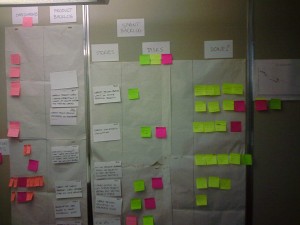“Individuals and interactions over processes and tools”
I’ve been thinking recently on the importance of people in this whole agile “thing” (for lack of a better word). I think people lose focus of the actual PEOPLE in a team and still focus on them as resources (some nice baggage from our waterfall days). Agile pushes the concept of a team thinking and working as a unit but I think it’s easy for individuals to become “lost” in this team and forgotten. Don’t get me wrong, I agree on the “team” mentality but people should also not forget about the individuals making up the team.
A simple question, as a “leader” of a team (ScrumMaster etc..) when last have you actually tried to find out if everyone is still “happy”? When last have you interacted with the person as a person and not a resource? I think, to some degree, personal interaction is important. Take a ScrumMaster for example; one of the key things they should be doing is “removing impediments”; often people think of these as purely work centric issues but what if they’re not? What if a team member is experiencing personal issues? This will definitely have an effect on the velocity of the project so why should you not try to help (or at least be aware of it)?
I guess what I’m saying is do not depersonalize the team, reducing them to “agile resources”; make people feel like they’re not only part of a team, but that they’re an indispensable individual within that team…
